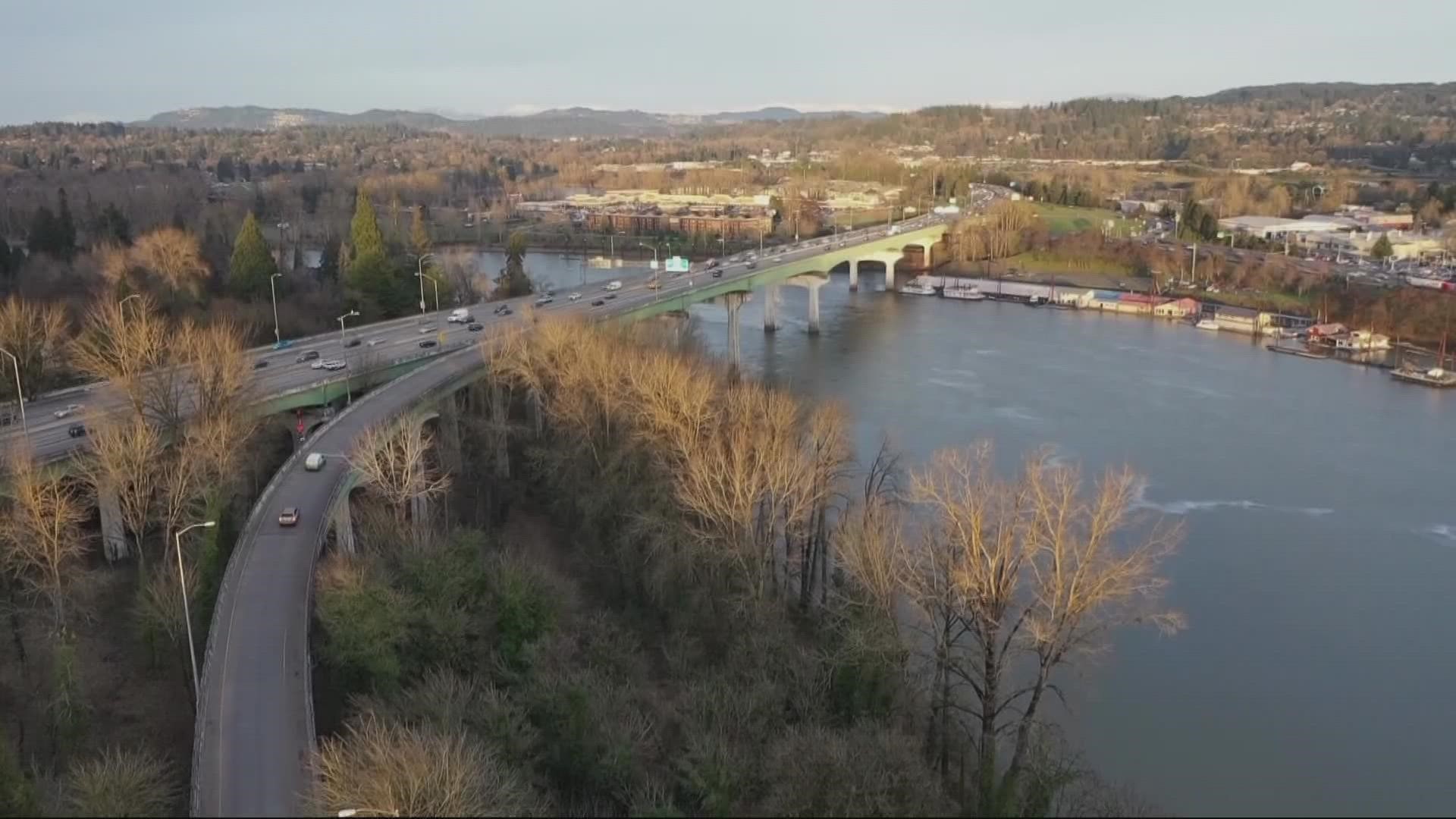CLACKAMAS COUNTY, Ore. — In a few years, drivers across the Portland metro area will have to pay to use Interstate 5 and Interstate 205. The impending tolls are part of the Oregon Department of Transportation’s new system to pay for improvements on the interstates. On Wednesday night, people in Clackamas County got a chance to ask questions about what it will mean for them.
“I have a real problem with tolling,” said Angela Nyland of Canby, summarizing the majority of public comments shared during the Clackamas County virtual town hall. During the meeting, members of Clackamas County's Board of Commissioners stressed that they don't have a say in the state's tolling decision. Board Chair Tootie Smith shared their disapproval of it.
“We believe it will have a disproportionate and detrimental effect on Clackamas County Residents, businesses and visitors,” said Smith.
Starting in late 2024, ODOT said drivers will be tolled on I-205 near the Abernathy and Tualatin River bridges. Funding collected would pay for several improvements on I-205. Among them, congestion management and work on the Abernathy bridge to make it earthquake-ready.
“Not having a toll means we don't have a project, the bridge doesn’t happen,” said ODOT’s toll program director, Lucinda Broussard. “Right now we are $510 million annually short for maintenance, which means right now we cannot do anything else. There is no innovation happening, there are no upgrades.”
A year later in 2025, ODOT will start its Regional Mobility Pricing Project. That will impact drivers on all of I-205 up to the Glenn Jackson Bridge and big stretch of I-5 from the Interstate Bridge to the Boone Bridge in Wilsonville.
“This tolling is inequitable,” said Dr. Rachel Neff of Gladstone during public comment. “No place I've lived — El Paso, Gig Harbor or Seattle — has had all lanes tolled.”
ODOT said one goal is getting commuters to carpool, work from home or adjust their commute times to help alleviate congestion.
“We are pricing for peak times,” said Broussard, “So technically during the peak it would cost more and not peak it would cost less but there would always be a price.”
Critics expressed concern over another potential pay price: congestion in their neighborhoods and side streets when commuters look for diversions around the toll corridors.
“I can't imagine what it will be like because many people will be diverted off 205,” said Tracy Marx of West Linn.
“In terms of working with local municipalities on alternate routes you guys are a little late to the party,” said Charles Jones of Happy Valley.
ODOT said they've spent the last three years exploring other funding options at the state and federal level, only to call toll revenue “critical.” Broussard said the alternative to tolling is to do nothing.
“If we do nothing, what do we expect our future to be?” Broussard said.
ODOT has not released information on how much the tolls will cost drivers. Broussard said that would likely happen six months before the tolls kick in.

